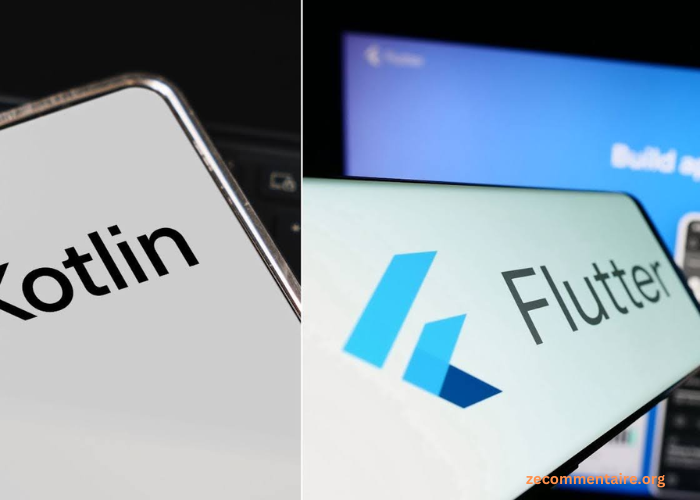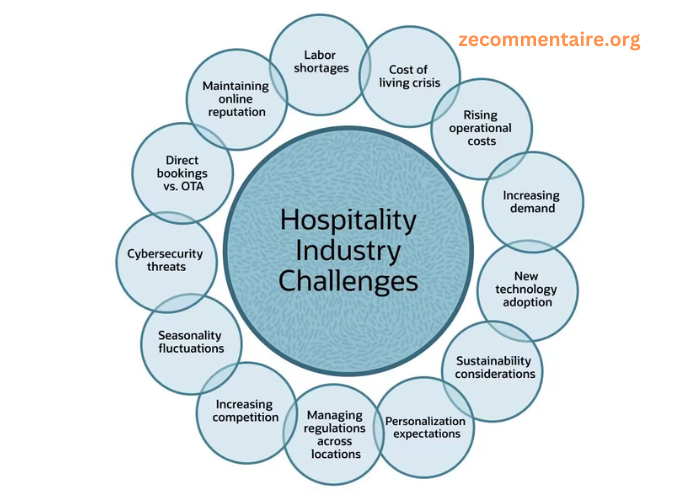When it comes to mobile app development and its vastly promising scope for businesses, choosing the right framework is crucial for the success of your project. The two most prominent contenders in the cross-platform development arena are Kotlin Multiplatform and Flutter. Each has advantages and trade-offs, making the decision-making process challenging for app developers and business owners alike. In this article, we will delve into the features, advantages, and use cases of Kotlin Multiplatform and Flutter, backed by relevant examples and statistics, to help you make an informed decision for your app development endeavors.
Understanding Kotlin Multiplatform:
Kotlin Multiplatform, developed by JetBrains, facilitates code sharing between Android, iOS, and web applications. Leveraging the power of the Kotlin programming language, it allows developers to write shared business logic while maintaining platform-specific code where necessary. It is not a full-fledged UI framework but a tool to maximize code reuse.
Advantages:
#1 Code Reusability – Less Redundancy
One of the primary advantages of Kotlin Multiplatform is its focus on code reusability. Developers can write a significant portion of the codebase once and share it across multiple platforms, saving development time. This is particularly beneficial for projects with complex business logic that doesn’t heavily rely on platform-specific features.
#2 Integration with Existing Code – Quicker Turnarounds
Kotlin seamlessly integrates with existing codebases, allowing developers to adopt it incrementally. This makes it an attractive choice for teams already using Kotlin for their Android projects, as they can extend the same language to other platforms without starting from scratch.
#3 Performance – At Par with Native Development
Kotlin also offers good performance as it compiles down to native code for each platform. While it may not match the performance of native development entirely, it comes close, making it suitable for a wide range of applications.
#4 Flexibility – Retains Originality
The flexibility offered by Kotlin also allows developers to write platform-specific code when necessary. This ensures that each platform’s unique features and requirements can be addressed without sacrificing the benefits of code sharing.
Understanding Flutter:
Flutter, developed by Google, is a UI toolkit allowing developers to create natively compiled mobile, web, and desktop applications from a single codebase. Flutter uses the Dart programming language and has its own widget set, providing a consistent look and feel across platforms. Unlike Kotlin Multiplatform, Flutter is actually a comprehensive framework covering UI and logic layers.
Advantages of Flutter:
Single Codebase, Native Performance:
Flutter allows developers to write a single codebase for both Android and iOS while achieving native performance. It achieves this by compiling down to native ARM code for mobile devices, ensuring that the app’s performance is on par with native applications.
Rich and Customizable UI:
Flutter’s UI toolkit offers various customizable widgets, allowing developers to create visually appealing and consistent user interfaces. The hot-reload feature enhances the development experience by allowing real-time changes to be reflected in the running application, speeding up the iteration process.
Large and Active Community:
Flutter has gained significant traction in the developer community, resulting in a large and active ecosystem. This means access to many packages, plugins, and community support, making it easier for developers to find solutions to common problems.
Fast Development Cycle:
The hot-reload feature in Flutter significantly speeds up the development cycle. Developers can see the impact of their code changes almost instantly, reducing the time spent on building and deploying the application for testing.
Comparative Analysis:
Code Reusability:
Kotlin Multiplatform: The shared codebase in Kotlin Multiplatform can be substantial, especially for the business logic layer. For example, if you have a complex algorithm that processes data, you can implement it once and use it across Android, iOS, and web platforms.
Flutter: Flutter also emphasizes code reusability but at a UI level. The same Flutter widgets can be used across different platforms, ensuring a consistent user interface. For example, a custom button created in Flutter will look and behave the same way on both Android and iOS.
Integration with Existing Code:
Kotlin Multiplatform: Kotlin Multiplatform is known for its seamless integration with existing Kotlin codebases. If your team already uses Kotlin for Android development, adopting Kotlin Multiplatform allows for a smoother transition to cross-platform development.
Flutter: While Flutter is generally adopted for projects starting from scratch, it does offer support for integrating with existing native code. However, this integration might not be as seamless as Kotlin Multiplatform, and the decision largely depends on the existing tech stack.
Performance:
Kotlin Multiplatform: The performance of Kotlin Multiplatform is commendable, as it compiles down to native code for each platform. For performance-sensitive applications, Kotlin Multiplatform can offer a good balance between code sharing and native execution speed.
Flutter: Flutter achieves native performance by compiling down to native ARM code. The performance is often indistinguishable from native applications, making it suitable for many use cases.
Flexibility:
Kotlin Multiplatform: Kotlin Multiplatform provides flexibility by allowing developers to write platform-specific code when needed. This is advantageous for handling unique features or optimizations on specific platforms.
Flutter: While Flutter is opinionated in terms of UI components, it still allows for customization. Developers can use platform channels to interact with native code when necessary, providing flexibility in handling platform-specific functionality.
Rich and Customizable UI:
Kotlin Multiplatform: As Kotlin Multiplatform is not a UI framework itself, the level of UI customization depends on the UI framework chosen for each platform. For example, if you use SwiftUI on iOS and Jetpack Compose on Android, you can create highly customized interfaces.
Flutter: Flutter is renowned for its rich and customizable UI. Developers can create complex and beautiful interfaces using the extensive set of built-in widgets or their custom widgets. This is exemplified by apps like Alibaba, which leverage Flutter’s UI capabilities for a visually appealing experience.
Development Community and Ecosystem:
Kotlin Multiplatform: While Kotlin has a strong community, the Kotlin Multiplatform community is still growing. It might not be as extensive as Flutter’s, but it benefits from the existing Kotlin community’s expertise.
Flutter: Flutter has a large and vibrant community, contributing to an extensive package and plugin ecosystem. This community support is evident in the growing number of Flutter packages available on pub.dev, making it easier for developers to find solutions to common challenges.
Conclusion
The decision between Kotlin Multiplatform and Flutter is pivotal for the success of your app development project, especially considering the ever-growing demand for skilled professionals in app development. Carefully weighing your project’s specific requirements, your team’s expertise and your long-term goals becomes paramount in this context.
If your primary goal is maximizing code reusability, particularly in scenarios where your team is already proficient in Kotlin, Kotlin Multiplatform could be the optimal choice. On the other hand, if you prioritize a dynamic and customizable UI, native performance, and a robust community support system, Flutter might better align with your objectives.
Given the competitive landscape of app developer jobs, staying informed about updates and advancements in Kotlin Multiplatform and Flutter is essential. The cross-platform development field is continuously evolving, and aligning your choice with the unique needs of your project positions you well in the dynamic job market. In this regard, app development companies like code clouds, with their in-house team of hybrid app developers and their rich portfolios, can help you see for yourself how the right choice of framework can lead to successful and scalable applications.
Additionally, making a well-informed decision is not just about choosing the right framework but also about equipping your team with skills that are in high demand. Regardless of your choice, leveraging the strengths of the selected framework is crucial to delivering a high-quality, performant, and visually appealing application — a key factor in gaining a competitive edge in the realm of finding promising development opportunities.





